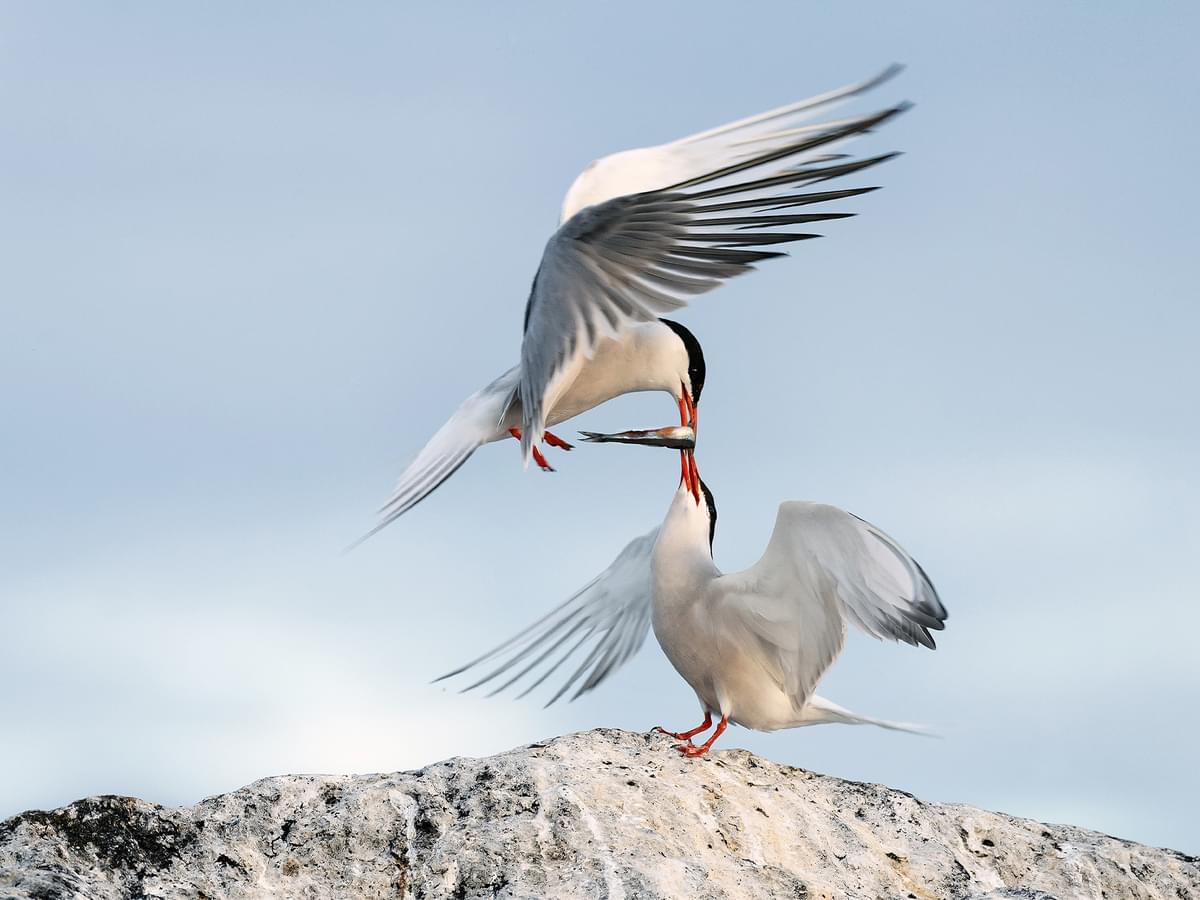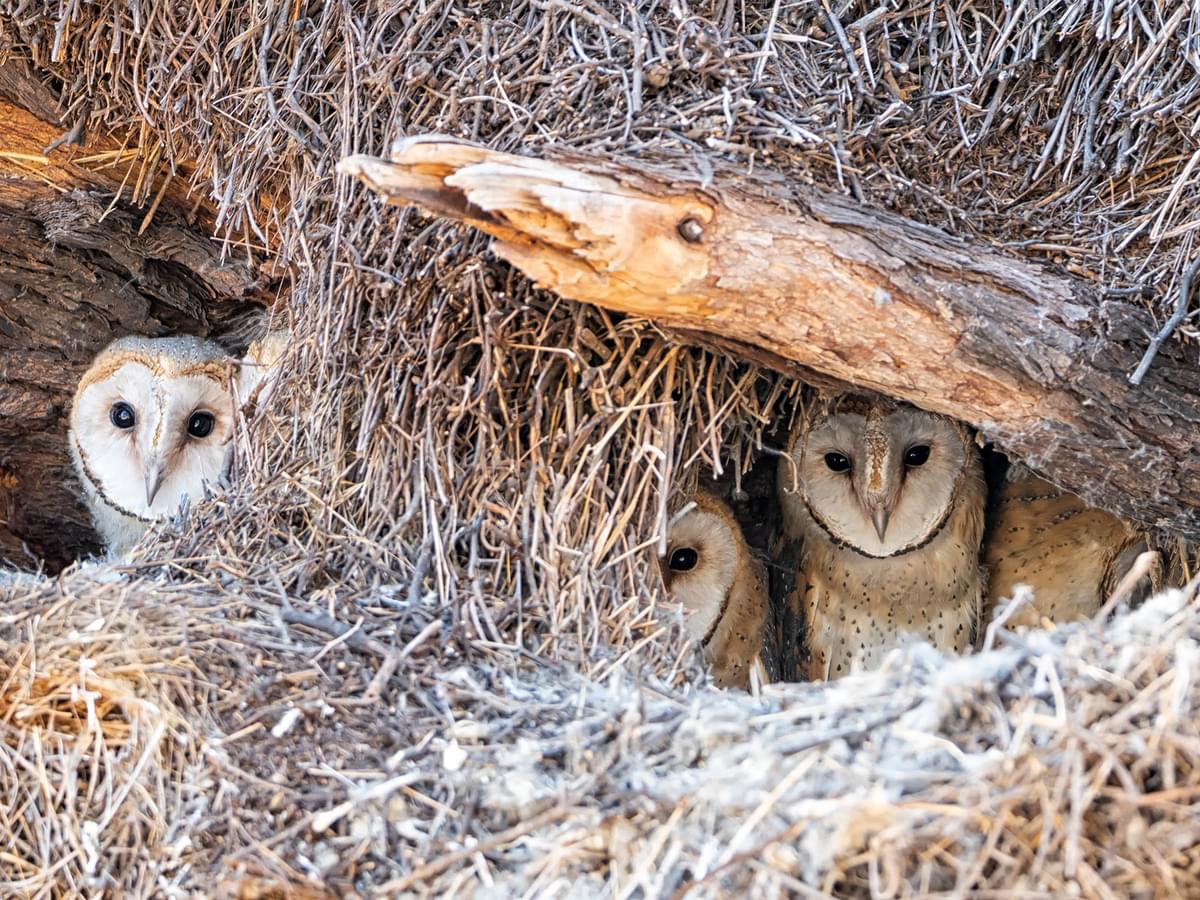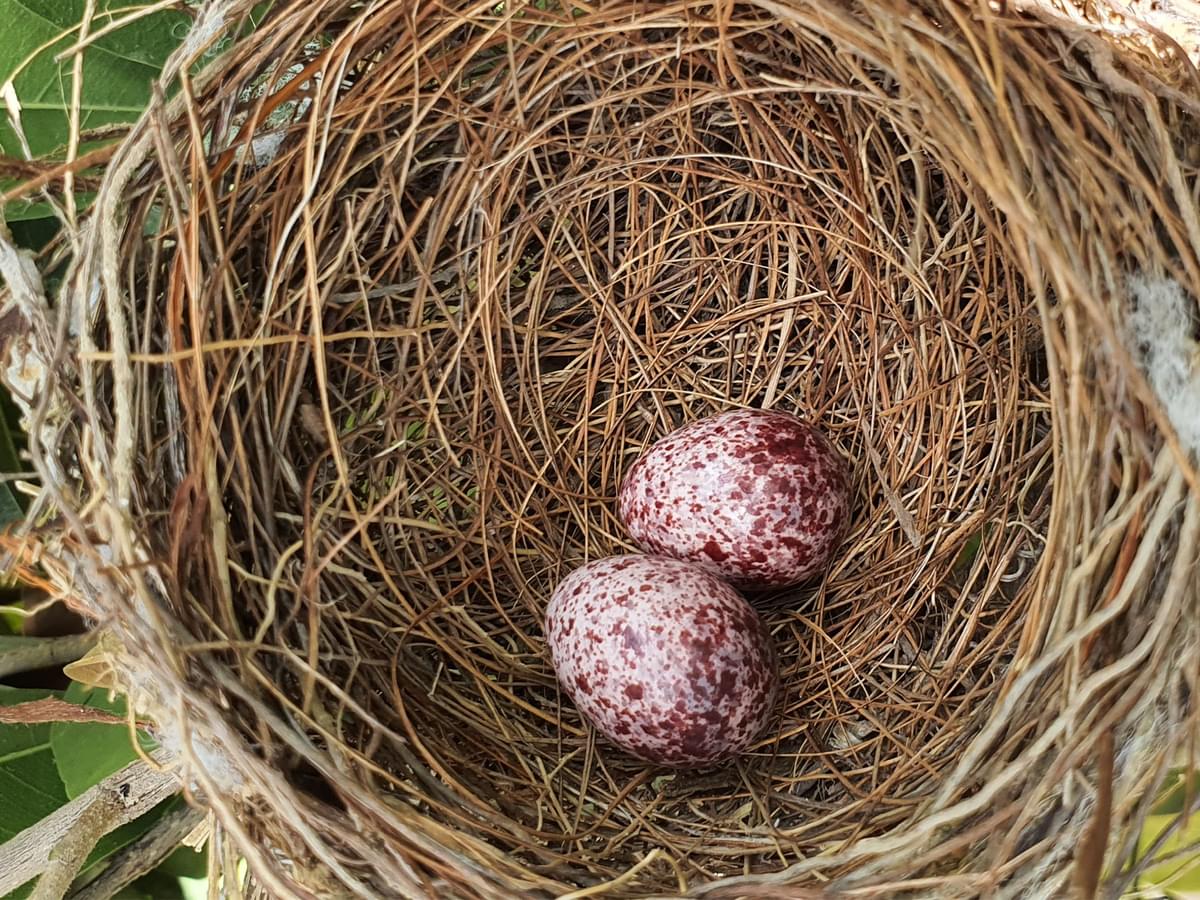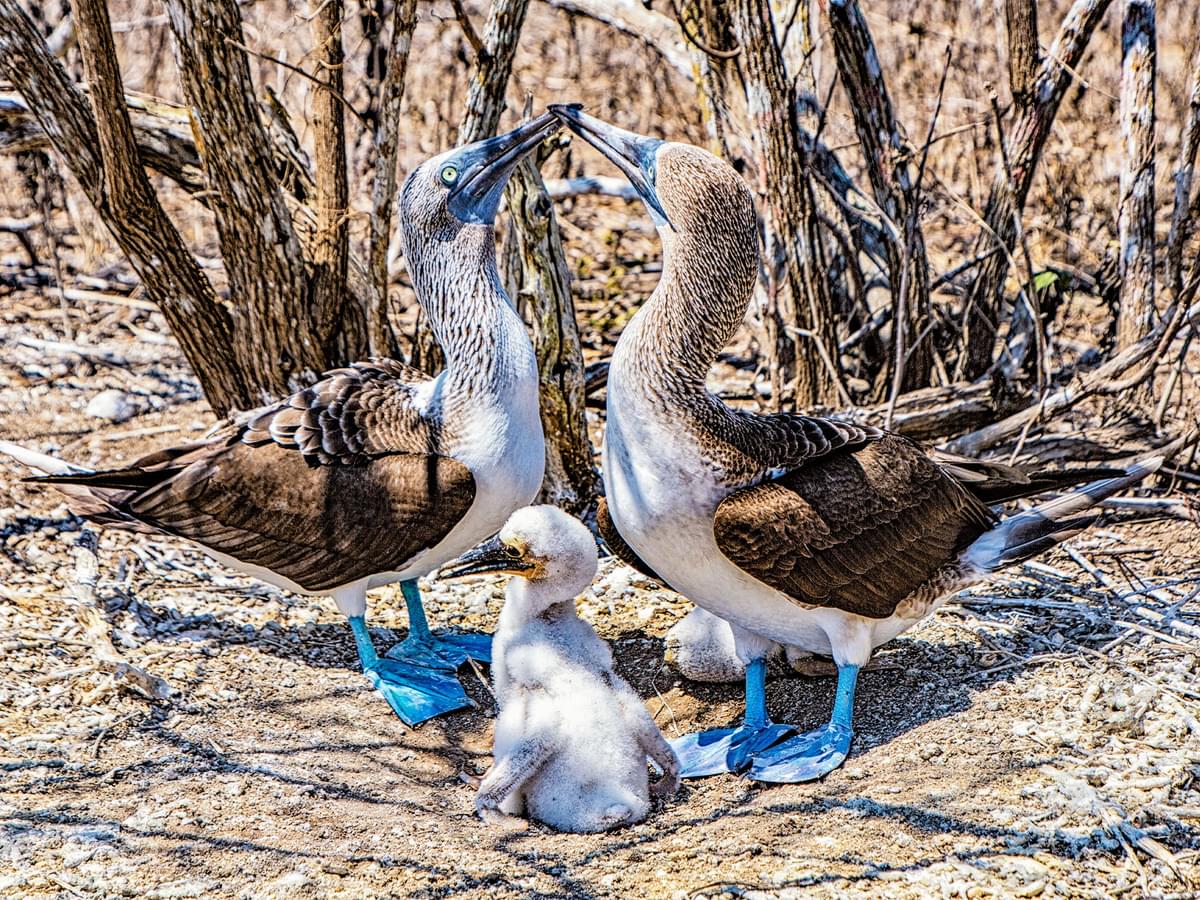Mating and Breeding

Overview of Bird Mating & Breeding
Reproduction is the driving force behind life on Earth, and it shapes bird appearance, behaviors, and distribution. Choosing the right mate is an important decision for birds, so they have developed all sorts of ways to prove their worth to each other.
However, pairing up is just the start of the often long and complex process of bird reproduction. Nests must be built, eggs must be incubated, and chicks must be nurtured through their first weeks and months if they are to survive to adulthood.
Read along with us as we introduce these fascinating facets of bird behavior!
Why Study Bird Mating & Breeding?
Bird watchers and nature enthusiasts appreciate birds for their beauty and the fascination they bring, but of course, they mean a lot more than that. These creatures interact with countless other species to regulate the global ecosystem, and they have a role to play in our own health and food security, too.
Many birds have very specific breeding and nesting requirements, which leaves them highly vulnerable to disturbance and habitat degradation. For these species, the study of avian reproductive biology and behavior plays a pivotal role in their ongoing survival.

Pictured: A pair of Great Frigate birds during mating ritual
Bird Courtship and Mating
Courtship Displays
Mate selection is vital before mating can begin, and the importance of finding the right partner is no small matter. The female holds all the cards in the bird world, and it’s up to the male to win her affection.
To do this, male birds have developed weird and wonderful songs, remarkable dance and flight displays, fancy nest-building skills, and ornate seasonal plumage. Courtship displays may occur just before the breeding season (usually spring) or many months earlier for species that form pairs before migration.
Putting on a song and dance shows prospective female partners that the male is fit and healthy and, therefore, has worthy genes to mix with her own. However, bright colors and conspicuous calls and displays also put males at increased risk of the wrong kind of attention. That’s why females tend to remain drab and well-camouflaged to avoid predation while raising their young.
Examples of courtship plumage, displays, and calls:
- The colorful gorgets and acrobatic display flights of male Hummingbirds
- The bright seasonal plumage of the male American Goldfinch
- The long tail feathers of Pintail Ducks in winter courtship plumage
- The extensive red wattles, large fan-tail, and unique gobbling call of the Wild Turkey

Pictured: An American Goldfinch in his bright seasonal plumage
Mating Systems
Birds have evolved many mating strategies to ensure successful reproduction. Some birds are highly monogamous and may form lifelong pairs with the same individual partner. This behavior is well-known in birds like Albatrosses, Geese, and Ospreys. Seasonal monogamy is more common, however, and most birds will find a new partner each year.
Monogamy has some great benefits for birds, chiefly because both parents can assist in nest building, incubation, and caring for the young. However, cheating is rife, and many birds will mate with their neighbors if given the chance.
Then, there are birds that reject the idea of partnerships altogether. The males of birds like Hummingbirds and Pheasants are polygynous, which means they will mate with several females if their territories and displays are attractive enough.
Although relatively rare, some birds are polyandrous, where females may mate with several different males. African Jacanas and some Sandpipers are examples of this behavior.

Pictured: Pair of Black-Browed Albatrosses. These birds are highly monogamous and may form lifelong pairs
Bird Breeding
Nesting Habits
After successfully finding a partner and reproducing, birds must prepare to care for their eggs and chicks. As a group, avians display high levels of care for their offspring, sometimes lasting several months.
The first step towards raising their young is finding or building a place to lay their eggs. Birds like Owls and Falcons rarely bother with this step, preferring to lay their eggs on the ground or in the old nests of other birds. However, most species make more effort, and some go to great lengths to build impressive and advanced structures.
The typical bird’s nest is rounded or roughly circular and has a concave shape ranging from saucer to bowl or even cup shape. Some dig burrows into the soil, excavate chambers into wood, or lay their eggs in naturally sheltered spots. Others nest in very exposed areas, although avoiding predators is paramount to all bird species.
Birds’ nests may be built from various materials, although twigs, grass, and other plant matter are most commonly used. Other materials include feathers, mud, bones, trash, and even their own saliva. One or both partners may assist in nest building, and their nests may be reused over several years or be discarded after a single brood.
Clutch size varies from a single egg to over a dozen in some species, and all birds must incubate their eggs to keep them warm or cool enough to develop. This phase can take less than two weeks in some small songbirds to over two months in larger Albatrosses.

Pictured: An Eastern Weaver weaving its nest
Breeding Seasons
Most birds nest in the warmer months of spring and summer when temperatures are favorable and food is most abundant. However, birds with long incubation and chick-rearing times, like Emperor Penguins and Great-horned Owls, start nesting in winter so their young can gain independence in easier times.
Over a third of the world’s birds are migratory, and these great travelers typically breed in spring and summer at the higher latitude part of their range. Remaining in their breeding range all year is generally impossible due to limited food supply or extreme living conditions.
Lastly, there are birds that breed throughout the year when conditions are favorable. This is possible for resident birds with a constant supply of food. Woodpigeons and House Sparrows, for example, have been recorded nesting during every month.

Pictured: Emperor Penguin feeding chick. Birds with long incubation and chick-rearing times start nesting in winter so their young can gain independence in easier times
Post-Breeding Phase
Parental Care
Incubation and chick rearing may be performed by one or both parents. Female Ducks and Hummingbirds do everything themselves, while birds of prey and other monogamous birds share the responsibility.
Roles and duties vary depending on sex and species. Male Woodpeckers, for example, are more likely to incubate eggs at night, while male birds of prey are more likely to deliver food to the female, who, in turn, feeds the chicks. Some birds involve the whole family in chick-rearing. American Crow chicks, for example, are raised by their parents and older siblings.
Some birds are terrible parents. Cuckoos, Cowbirds, and Honeyguides lay their eggs in the nests of other unsuspecting birds. After hatching, the Cuckoo chicks evict the other eggs or chicks in the nest and are cared for by their host parents.

Pictured: A Cuckoo chick being fed by its host parent (European Robin)
Feeding
Birds feed their chicks in various ways. Some bring whole prey items like small insects, while others, like raptors, provide small morsels or strips of meat.
Others regurgitate partially digested food for their chicks, and Pigeons and Doves even produce a milk-like substance known as crop milk.
However, many chicks are able to feed themselves from the get-go. These precocial chicks include ducklings and the young of most waterbirds and groundbirds.
Protection
Regardless of diet, all young birds benefit from protection from their parents. Adult birds can be remarkably courageous when defending their nests, and larger birds of prey, Swans, and flightless birds like Ostriches can be downright dangerous.
Some birds are entirely incapable of intimidating or fighting against predators and use their smarts instead. Waders and shorebirds like Lapwings and Plovers feign injury by limping and holding their wings as if broken. This act draws the predator away from their nest in hopes of a larger meal.

Pictured: A Female Ostrich walking in grasslands with her brood of chicks
Fledging and Independence
No bird hatches from its egg ready to fly, so chicks need time to grow and develop their adult feathers before gaining independence. This can take just two weeks for small species or as long as 5 or 6 months for large birds like California Condors.
Many young birds leave the nest well before they’re ready to fly. They usually stay nearby, although these adventurous youngsters often end up on the ground or in the hands of concerned people. This is a dangerous time for these adolescents but a perfectly normal part of their development.
Even after learning to fly, young birds often rely on their parents for extended periods. They will follow their parents and beg for handouts until they’re chased from the territory or leave to make their own way in life.

Pictured: A Starling feeding its young fledgling chick. Young birds often rely on their parents for extended periods
Challenges and Conservation
Threats to Successful Breeding
Birds face countless natural and anthropogenic (human-caused) threats while breeding. The following are prime examples:
- Natural predation
- Competition for nesting sites
- Extreme weather events
- Habitat destruction that damages their nesting areas or limits their natural food sources
- Hunting and egg harvesting
- The introduction of exotic predators like rats and cats
Accelerated climate change is considered a significant threat to birds around the world. This novel challenge affects nesting birds by altering their habitats and changing their nesting times. Studies have shown that some birds have begun nesting weeks before their historical starting dates.
Conservation Efforts
About one in every eight bird species is globally threatened, and nearly half of all birds are in decline. For some, it is already too late, but conservation still has a crucial role to play in safeguarding the world’s birds.
General habitat protection is of key importance for all biodiversity, but birds may be particularly vulnerable to losing breeding habitats. Some wide-ranging species rely on very specific nesting areas, sometimes limited to just a few small islands.
You can play your part in bird conservation by creating safe nesting habitats around your own property and community and by supporting local, national, and international charities and conservation bodies involved in the management and protection of bird breeding habitats.

Pictured: A Snowy Owl. About one in every eight bird species is globally threatened, and nearly half of all birds are in decline
Summary
The behaviors of mating and breeding birds are some of the most fascinating in the natural world! From finding a partner to building a nest, nurturing their eggs, and raising their young, birds have devised various ways to reproduce and perpetuate their species.
Each species has perfected its reproductive strategies over millennia, but unfortunately, a planet changing through destructive land use and climate change has put many species under pressure.



